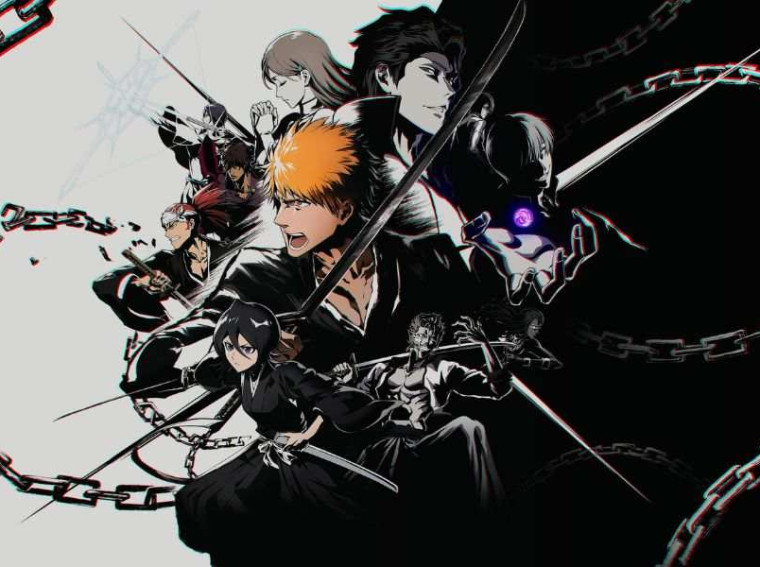Forspoken Review – Flawed Gem
Forspoken Review
Ever since it was announced as “Project Athia” back in 2020, Forspoken has had quite the rocky journey, plagued by multiple delays during its development cycle. Published by Square Enix and developed by Luminous Productions, Forspoken follows the adventures of Alfre “Frey” Holland, a troubled youth from New York who is magically dropped into the world of Athia and now has to find her way home.
When we tried it out in TGS 2022, we noted that it is “promising but needs a bit of work.” The demo that was released recently also didn’t make quite a good impression, simply dropping players into the world without a way to know what you have and what to do.
Did the extra months of development help Forspoken get back up on its feet, or did it fail to stick its parkour landing? Read on, fellow adventurer, and find out if I’ve acclimated to Athia’s world or if I would rather have stayed in New York instead.
Culture Shock
Forspoken is one of those games that requires you to take your time to acclimate to its world. Its opening chapters introduce Frey, slowly leading to her being whisked away to the magical world of Athia. From there, it takes roughly four more chapters to ease you into Athia’s lore and the magical gameplay that we’ve come to know through its many trailers.
Story-wise, the world is somewhat of a challenge to warm up to. While I initially related to Frey and empathized with her plight, the dialogue swung to extremes where, on the one hand, you were exposed to an exposition-laden fish-out-of-water story. Then, in an attempt to sound edgy, Frey begins spouting an obscene amount of profanities, diluting the original intention.
This goes on for multiple chapters, adding nothing new to Frey’s character development or the lore of the world. This repeated, tedious exchange between the two ended up turning into background noise at best. After a while, the dialogue ended up looping the same lines, so I’m thankful that you can switch off the conversations between Frey and Cuff.
In the context of Frey’s Isekai situation, some of the lines do make sense and do not seem as bad as isolated clips would make it out to be. Most of Forspoken’s problems lie in its tendency to excessively use and repeat these over and over that it eventually becomes irritating and something that you would just rather turn off.
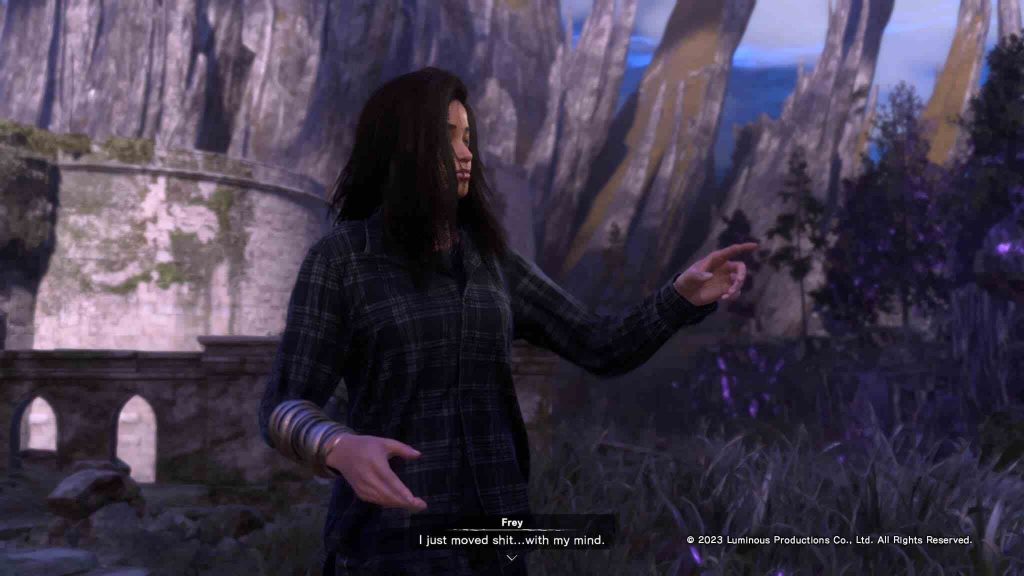
Forspoken finally achieves some form of balance once you’re able to explore the world freely. After a good long while of being dragged around, receiving some form of agency to fully explore was a breath of fresh air. By this time, it will have been about 6–8 hours of gameplay, which is a long time before the game finally provides the reasoning for its open-world creative choice.
It mostly has to do with the way magic parkour works, whose potential is really hampered when locked in a box or in corridors. By being able to glide through the world using your basic Purple Magic skill tree or another element such as fire or lightning, different styles of traversing come into light.
Purple Magic, for example, allows you to free run through the vast open world, glide through the crevices, and shimmy up some tough-to-climb cliffs. Red Magic is a different style, allowing you to free-run the way Batman does in Arkham City. With the fire whip, you’re able to swing through cityscapes and even cliff faces to reach higher areas.
Being able to switch between these magic skill trees brings out a really fluid traversal system that’s a joy to experience, actualizing the potential of the magic parkour system. Whatever has been advertised is definitely real, and you can pair it off with time trials called “Flashbacks” that allow you to traverse through open spaces for stat increases and gear.

The same goes for open-world activities, where you can travel to several areas on the map to improve your magic, stats, and even pick up treasures in between. While enjoyable at first, I would’ve appreciated a smaller world where there are much fewer activities with substance rather than a mass of the same repetitive chores.
As you progress through Athia’s world, Forspoken slowly devolves into collectible-gathering tedium with the same generic open-world activities found in most open-world games (stat monuments, fast travel unlocks, magical fonts, area boss encounters, timed quests).
I did appreciate some of the side quests, called “Detours,” as they provided a bit of a break from the overbearing story. You’re rewarded with better equipment in the form of cloaks, necklaces, and nails. You also get some rare crafting material, allowing you to upgrade your equipment and healing/material bags. Plus, you get to pet some cats.
With Great Power Comes No Responsibility
As with the aforementioned things, combat in Forspoken doesn’t fully unfold until much later in the game. The first few chapters really ease you into its combat intricacies and allow you to grasp the specific physics behind it all, offering synergy with the magic parkour system.
With each unique color skill tree, there’s the basic attack magic that doesn’t require any cooldown, and you can charge its potency or you can simply fire away. Purple Magic starts off with a shot, while Red Magic has the fire blade, and you can switch between its variations as you learn them. The shot can eventually be turned into a scatter shot (for crowd control) or a shield shot (for defensive combat), while the blade can be changed to a blast blade (for splash damage) or a rage blade (for more close-quarters combat).
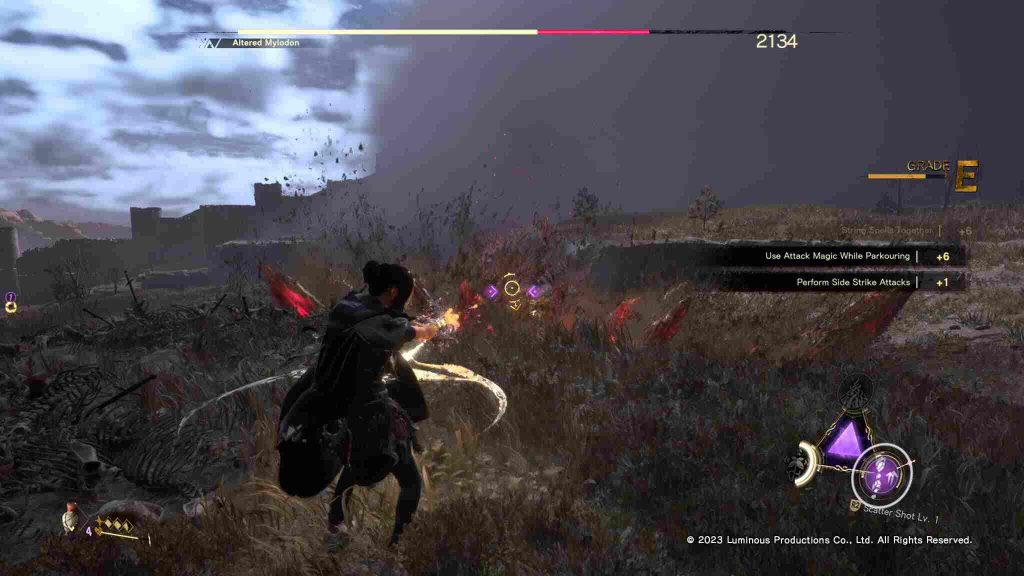
Support magic in Forspoken provides robust, higher-level spells that either give you a combat boost or heal status effects, with its downside being its substantial cooldown. Surge Magic rounds up both types, as this type of magic is an Area of Effect attack that deals massive damage while also adding status effects such as debuffs and poison, thus incurring a larger cooldown.
When put together with everything, Forspoken presents a frenetic combat system that allows you to free-run while dodging massive armies of enemies coming at you at high speeds. Boss battles are even more exhilarating, as you are tested by doing various things all at the same time. Throw in some magic counters and kill shots, and you have yourself a magic battle for the ages, which you can test out with the many open-world challenges.
If whatever I described sounds overwhelming, that’s because it is. Somehow, Forspoken’s slow pace makes sense, but at the same time, will players have enough patience to push through this slow burn?
Given the amount of time they spent building up the magic parkour and combat systems, the developers could’ve used more time for immersive storytelling. By the time you’re actually settled into Forspoken’s systems, the main campaign is about to wind down, and there are not many interesting activities to look forward to after that.
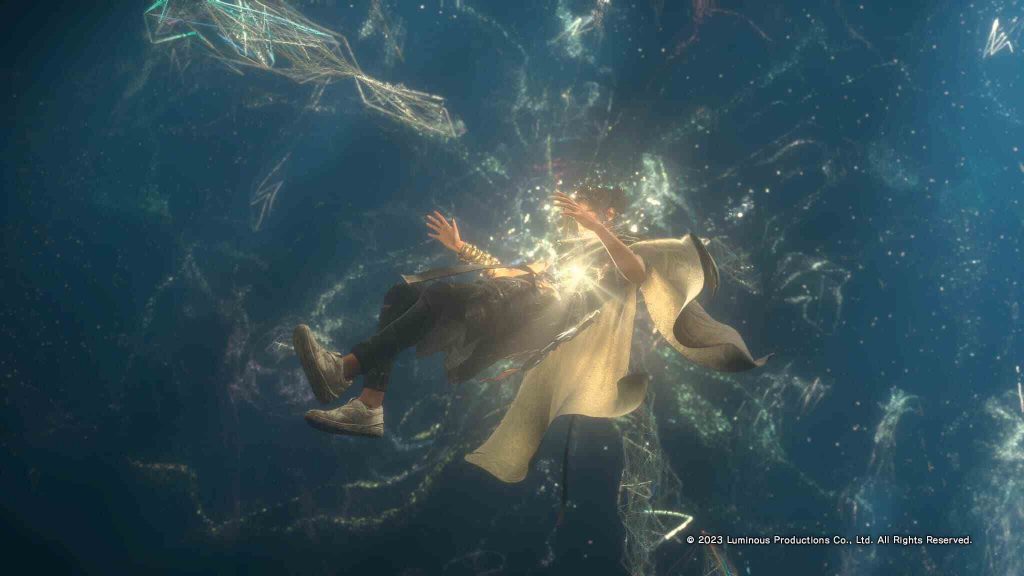
Forspoken could’ve taken a safe route, following Nier Replicant‘s model where the fetch quests tell the stories of the townspeople on a smaller scale, so the Detours in the game feel like a missed opportunity. Side activities usually devolve into uninspired fetch quests, and players are mostly told about Athia rather than having them experience it themselves.
As mentioned earlier, Forspoken fails to implement any form of immersive storytelling. You’re consistently nagged that Athia is “a really sh*tty f*cking place”, but it’s inconsistent with the beautiful landscapes that you traverse using your god-like powers, making Frey’s incessant complaining sound ungrateful.
Frey’s motivations and backstory were heavily truncated that we don’t really get a sense of what her character is from the get-go. At best, they were largely cosmetic, and her ultimate desire to return to New York doesn’t exactly land because as we’re shown in the opening chapters, there’s really nothing for Frey to return to in New York besides the familiarity of the city and her cat. Some consistency would have been nice.
While the world and the characters seemed to have grown on me, they were shadows of the marketing promises that weren’t implemented. Forspoken surely does get a little better, but my experience of it feels uneven. There are momentary highs, moments of character growth, and even touching scenes. However, they’re plagued by a lot of blank open spaces, lazy writing, and just general blandness.
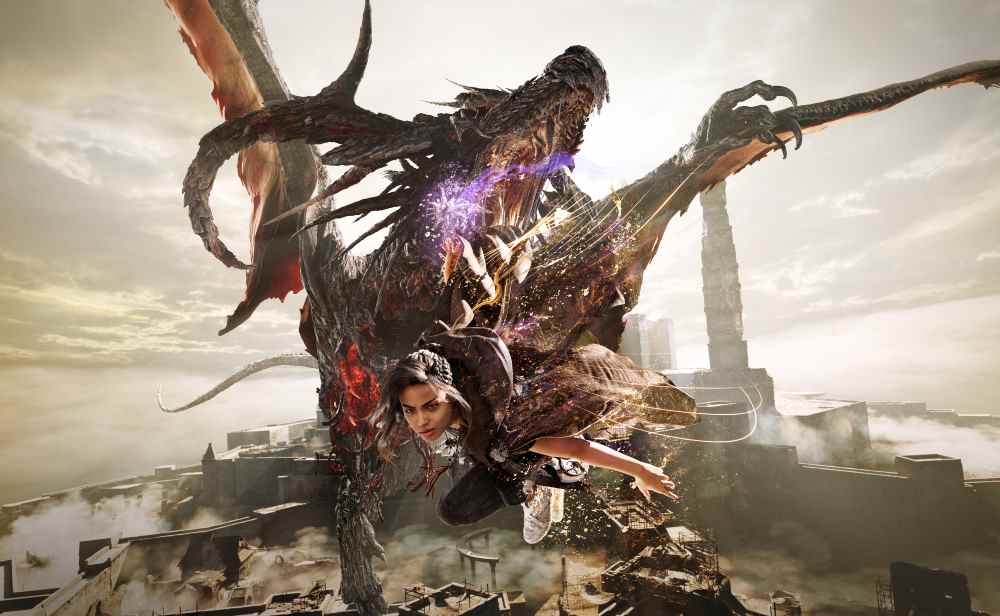
What We Liked:
- Magic parkour traversal is quite engaging.
- Combat eventually becomes very enjoyable.
What We Didn’t Like:
- Dialogue can be grating, ranging from tiring expository explanations and excessive, unnecessary profanities.
- The first half of the game could’ve been paced better.
- Immersive storytelling could’ve been better utilized to justify the barren open world.
Verdict: Wait for it…

Forspoken is a game of unrealized potential. A lot of the bad press it received in the months leading up to its launch was due to its writing and dialogue, which are honestly not that bad when taken in context, but the game has a tendency to use things in excess, making them something that you’d rather miss out on.
The combat and traversal mechanics are generally fantastic once they come together, but the half-baked story and lack of immersive storytelling aren’t quite as present compared to the gameplay. Its terribly paced first few hours also don’t help, giving off a misunderstood first impression that may lose players before it gets a chance to recover.
Forspoken demands so much from the player to communicate the beauty of this game that it feels nagging. For the patient, unique gameplay and the frenetic freedom to traverse a vast landscape at breakneck speeds is the reward. For everyone else, the magic will slip them by completely, missing the landing altogether.
*Forspoken was reviewed on a PS5 with a review code provided by the publisher.

